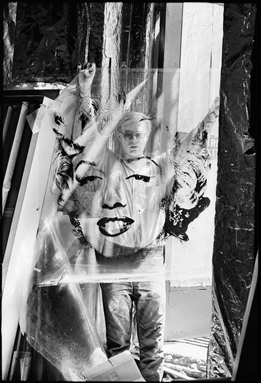 Spring 2013
Spring 2013
Up close with Andy
During Art Basel Miami Beach week in December, The Andy Warhol Museum launched its first limited-edition portfolio of photographs. The box set, with a price tag that will rise to $40,000 as it’s sold, is limited to 50 editions and includes five signed photographs of Andy Warhol taken by William John Kennedy in 1964, just prior to Andy opening his Silver Factory. The two artists met the year before, when Kennedy was an aspiring photographer. “They developed a friendship and Kennedy was able to capture a side of Andy that few people knew,” says Eric Shiner, director of The Warhol. “With this rare body of work, Kennedy has given us some of the most joyous and insightful images of Andy Warhol ever created.” Published by KIWI Arts Group to benefit The Warhol, Kennedy’s images feature the Pop artist with some of his most influential work of the early ‘60s: Marilyn, Birmingham Race Riot, American Man, Self-Portrait, and Flowers.
Treasuring Teenie
In December, Carnegie Museum of Art was awarded a $300,000 challenge grant from the National Endowment for the Humanities (NEH). When matched, the funds will endow the position of archivist for the museum’s prized Teenie Harris Archive. A freelancer and photographer for the influential Pittsburgh Courier, Charles “Teenie” Harris produced nearly 80,000 images of Pittsburgh’s African American community from the 1930s to the 1970s. The museum’s most recent exhibition of Harris’ work, Teenie Harris, Photographer: An American Story, was the culmination of a 10-year, NEH-funded archiving effort that involved cataloging 70,000 negatives, digitizing more than 50,000 images, and gathering oral histories from Harris’ contemporaries and some of the subjects of his images. Also new: Teenie has a regular public presence at the museum. On view now in the first-floor hallway leading up to the Museum of Art offices: Teenie Harris Photographs: Focus on Hair.
1,500 Planetarium Shows Carnegie Science Center’s Buhl Planetarium has distributed 1,500 planetarium shows in 54 countries on six continents and in 20 languages.
"There's nothing intimidating about science... it's all about curiosity. [Young women] shouldn't be afraid to look for the answers."
–Tracy Cui, associate professor of bioengineering at the University of Pittsburgh, upon winning the 2013 Carnegie Science Award for Emerging Female Scientist. Her pioneering research involves developing smart biomaterials for neural implants and neural tissue engineering.
Family Matters
No one ever said it would be easy, and it wasn’t. For the past six years, an international, interdisciplinary team of 23 researchers—including Carnegie Museum scientists—have been reconstructing the largest branch of the mammalian family tree: placental mammals, the group that includes humans, whales, and, yes, rodents. Part of the Assembling the Tree of Life program funded by the National Science Foundation, the project is a groundbreaking look at the evolution of this group of mammals which, as the team determined, didn’t diversify until after the age of dinosaurs. The scientists accomplished their task by merging genetic and physical traits on a huge scale, including thousands of characteristics of the anatomy of both living and extinct animals. “In the field of mammal research, there had been a big divide between people working with DNA and others working on morphology; they just weren’t working together until now,” explains Carnegie Museum of Natural History curator of mammals John Wible, who co-wrote the paper announcing the group’s findings for the journal Science. By using the new family tree of mammals in tandem with anatomical data, the team was able to paint the above picture of what our placental ancestor may have looked like.
Submit photographs inspired by one of 13 works recently added to Carnegie Museum of Art’s photography collection and one of your images could end up on view in the museum! Think about subject, character, landscape, composition, color, mood—whatever strikes you. Each day, as part of the Oh Snap! Your Take on Our Photographs project, we’ll print out submitted photographs and hang them alongside their inspirations in the Forum Gallery. Get snappin’: |
Under the Influence · The Shape of Things · Creatures of the Wild · The Carving Out of a Collection · Director's Note · Face Time: Nina Marie Barbuto · Artistic License: Permantly Interesting · Science & Nature: Survivor's Tale · About Town · The Big Picture
 |
Copyright © 2017 CARNEGIE Magazine. All rights reserved. |






